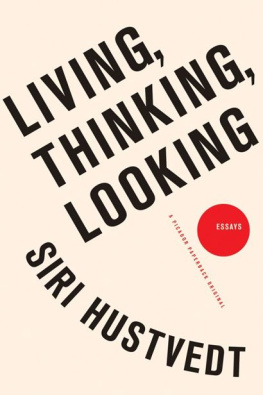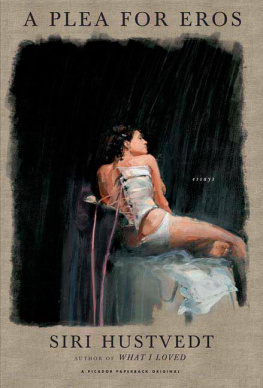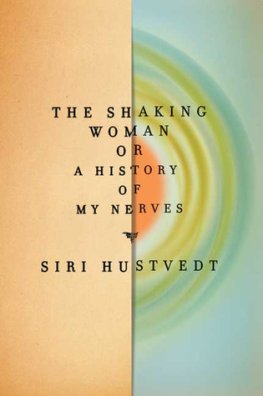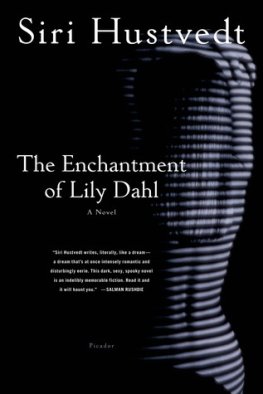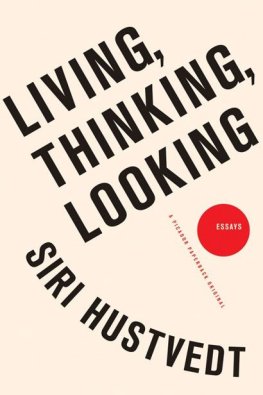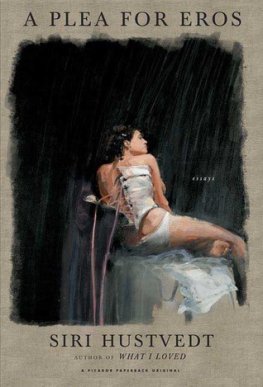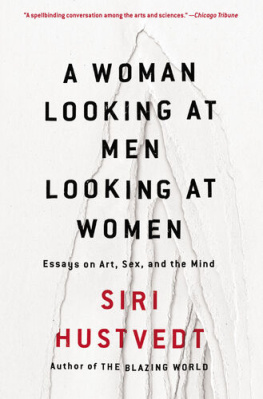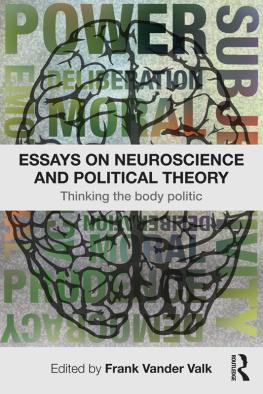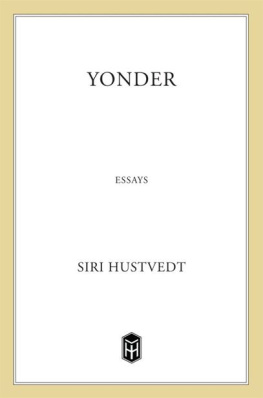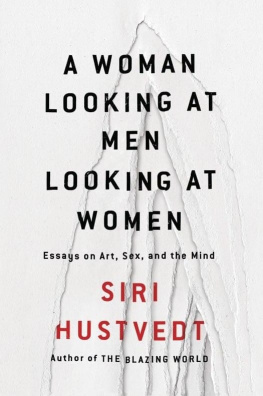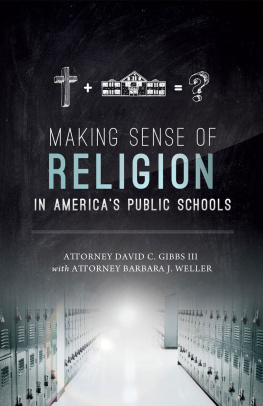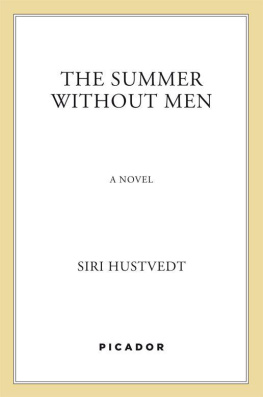
For Frances Coady
CONTENTS
AUTHORS NOTE
A FTER REREADING THE ESSAYS COLLECTED in this book, I understood that although they take on a number of subjects, they are linked by an abiding curiosity about what it means to be human. How do we see, remember, feel, and interact with other people? What does it mean to sleep, to dream, and to speak? When we use the word self, what are we talking about? Every age has had its own platitudes, truisms, folk wisdom, and dogmas of varying kinds that purport to answer such questions. Ours is no different. In fact, we are drowning in answers. From simplistic self-help manuals on sale in every bookstore to the just-pull-yourself-together advice offered by talk-show therapists to the more sophisticated arguments made in evolutionary sociobiology, analytical and continental philosophy, psychiatry, and neuroscience, theories abound in our culture. It is important to remember that despite the plethora of solutions, who we are and how we got that way remain open queries, not only in the humanities but in the sciences as well.
Written over the course of six years, these essays reflect my desire to use insights from many disciplines for the simple reason that I have come to believe that no single theoretical model can contain the complexity of human reality. The reader will find references to philosophy, neuroscience, psychology, psychoanalysis, neurology, and literature. Some thinkers make repeated appearances: Edmund Husserl, Maurice Merleau-Ponty, Martin Buber, Sigmund Freud, William James, D. W. Winnicott, A. R. Luria, Mary Douglas, and Lev Vygotsky. The findings of neuroscience research run throughout the book, especially the work that has been done on perception, memory, emotion, and the relationship between self and other.
I am deeply committed to the use of ordinary language in my work. Esoteric jargons, however, do not come about because those in the know are snobs. Specialized languages make certain conversations possible because the speakers have refined their definitions and can then share and work with them. The problem is that the circle of speakers is closed unto itself, and the expertise of one field is not available to those in another, not to mention to laypersons who comprehend nothing. I believe that to some degree, at least, genuine talk among disciplines is possible and that distinct discourses can be unified through a lucid exposition of ideas. Nevertheless, it is fair to point out that these essays first appeared in a wide range of publications, from literary magazines such as Granta, Conjunctions, Salmagundi , and The Yale Review, to newspapers and magazines such as The Guardian of London, The New York Times, and the Nouvel Observateur, to more specialized journals including Contemporary Psychoanalysis and the peer-reviewed Neuropsychoanalysis . Some of the pieces therefore have extensive notes, while others have none. Some of the texts were originally delivered as lectures. The Morandi essay was one in a series of talks at the Metropolitan Museum: Sunday Lectures at the Met. Why Goya? was delivered at the Prado. Embodied Visions: What Does It Mean to Look at a Work of Art? was given as the third annual Schelling Lecture at the Academy of Fine Arts in Munich, and Freuds Playground was written for the thirty-ninth annual Sigmund Freud Lecture, which I gave in Vienna in May of 2011. In some of these cases, I was able to assume certain kinds of knowledge among the members of my audience, while in others I was not. Nevertheless, every text in this collection is an essayfrom the French essayer, to tryand they are all written in the first person.
The personal essay began with Montaigne in the sixteenth century and continues to thrive today. Like the novel, its form is elastic and accommodating. It makes use of both stories and arguments. It can proceed with rigorous precision or meander into surprising terrain. Its shape is determined exclusively by the movements of the writers thoughts and, unlike papers published in science journals, or articles in academic journals or in newspapers, the first-person point of view is not banished but embraced. For me, this is more than a question of genre. My use of the first person represents a philosophical position, which maintains that the idea of third-person objectivity is, at best, a working fiction. Third-person, objective research and writing is the result of a collective consensusan agreement about method, as well as shared underlying assumptions about how the world works, be it in neuroscience or journalism. No one can truly escape her or his subjectivity. There is always an I or a we hiding somewhere in a text, even when it does not appear as a pronoun.
But who is the I on the page? Why use it? Some of the essays in this book are anecdotal, explicitly about my own experience; others make arguments I could easily elaborate without bringing myself into the text. I want to implicate myself. I do not want to hide behind the conventions of an academic paper, because recourse to my own subjective experience can and, I think, does illuminate the problems I hope to untangle. In an age of the confessional memoir, it is perhaps not surprising that there are those who expect a torrent of intimate material whenever they pick up a nonfiction book written in the first person. Im afraid this is alien to my character. My essays are a form of mind travel, of walking toward answers with an acute awareness that I will never come to the end of the road. I use my own experiences the way I use the experiences of othersas insights to further an idea. In the following essays, I appear and disappear as a character. My presence and absence depends on the argument I am making.
There is nothing new about such an approach. We find out a great deal about Augustine in his Confessions, but what he tells us about the agonizing struggles he wages with himself is never gratuitous. It is illustrative of a profound philosophical investigation meant to bring the reader to his own spiritual awakening. A modern and far more circumspect example of the self as vehicle for ideas is found in Freuds The Interpretation of Dreams. By analyzing his own dreams, the neurologist reveals enough of himself to make his points stick, to sway his reader toward his new theory of sleep and dreams. Admittedly monumental, these two writers stand as exemplary nevertheless.
I received my Ph.D. in English literature at Columbia University in 1986, but I did not become a professor. I have been free to pursue my education as I have seen fit, and I feel blessed that I do not have to keep up in my field. Because my reading is self-directed, I have been able to spend countless hours studying neuroscience papers, aesthetics, psychoanalysis, the history of medicine, and philosophy, among other fields that interest me. I have attended many lectures and conferences and, in these last years, have also been giving lectures at conferences. There is no question that I am an outsider, an unaffiliated intellectual roamer who follows her nose and has found herself on unexpected ground, surveying landscapes I knew very little about before I arrived on site. These mental travels have been a joy for me, as have my encounters with the inhabitants of what were once foreign worlds, the scientists and doctors and thinkers of varying kinds I have met during my adventures.
The book is divided into three sections: Living, Thinking, Looking. As with most categories in this world, they are not absolute, but they arent arbitrary either. It would be difficult to do much thinking or looking if you werent living, for example. Still, I chose Living for the most personal essays, those that were, in one way or another, generated directly out of my life. The Thinking texts, on the other hand, were all driven by an intellectual puzzle. What is the difference between writing fiction and writing a memoir? What role does memory play in the imagination? Are they the same faculty or two different ones? How can we frame what happens between one person and another? Do two people create a third reality between them? The essays in the Looking section are all about art and artists. I have been writing about visual art for close to twenty years now. Over and over, I find myself lured in by some mysterious or disturbing work I cant resist pondering for a while, and I am prompted to say something about it. Since my last book on painting, Mysteries of the Rectangle, was published in 2005, I have continued to try to write about artworks in a language that does not violate, reduce, or betray perceptual experience. This is not easy. An image is not a text. The difficulties inherent in the undertaking, however, have pushed me to examine further what it means to look at works of art and to develop an embodied, intersubjective approach to the question, one articulated most fully in the last essay in this collection.
Next page
